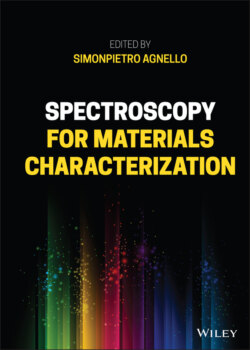Читать книгу Spectroscopy for Materials Characterization - Группа авторов - Страница 40
2.1.6 Inhomogeneous Effects
ОглавлениеTill now, we have dealt with the homogeneous spectral lineshape of a single defect that is expressed by Eqs. (2.51) and (2.52) related to absorption and luminescence, respectively, which apply to the coupling with a single localized mode. In fact, the homogeneous features can be measured in systems where all defects are absolutely identical and undergo precisely identical changes under the influence of the surrounding matrix. A class of solids that quite well reproduces this condition is that of the crystals containing defects embedded exactly in equivalent positions with respect to the matrix.
A completely different framework is represented by amorphous solids where, due to the disordered network, each defect is surrounded by a different local environment; this site‐to‐site nonequivalence results in inhomogeneous effects on the spectral features [10, 11]. In the simplest approximation, it is assumed that inhomogeneous fluctuations cause an energy shift of the homogeneous spectrum as a whole without any changes in its shape, whereas the other spectroscopic parameters (transition probability, phonon energy, …) remain constant. In this case, it is convenient to introduce a one‐dimensional inhomogeneous distribution function w inh(E 00), so that w inh(E 00)ΔE represents the fraction of defects having their ZPL in the energy interval ΔE around E 00. The inhomogeneous distribution is usually described by a bell‐shaped Gaussian function:
(2.54)
peaked at the mean energy whose width σ inh does not depend on temperature. In the general case, the whole optical spectrum, both absorption and luminescence, is therefore given by the convolution of Eqs. (2.51, 2.52) and (2.54) in which the first is conveniently rewritten as a function of E 00:
(2.55)
Because of the inhomogeneity effects, the vibronic spectral features are smeared out; then, the whole optical band appears to be structureless and its total width is determined by the different weights of homogeneous and inhomogeneous broadening mechanisms.
